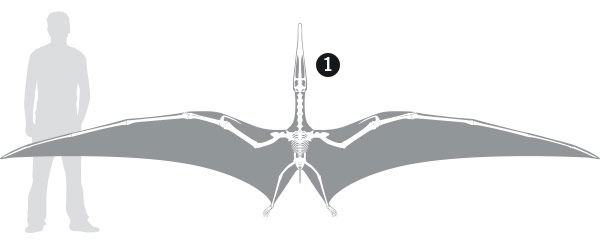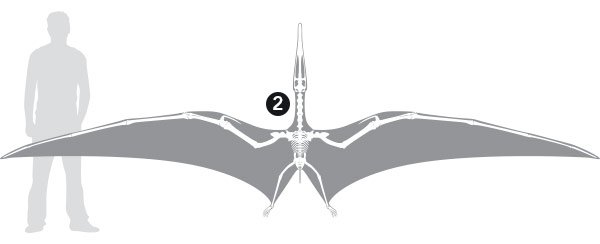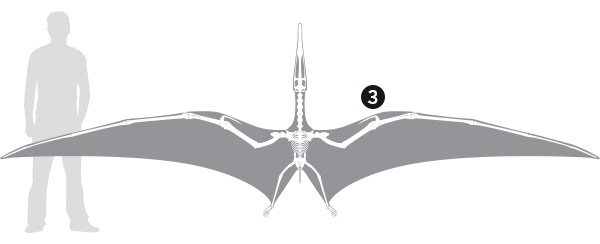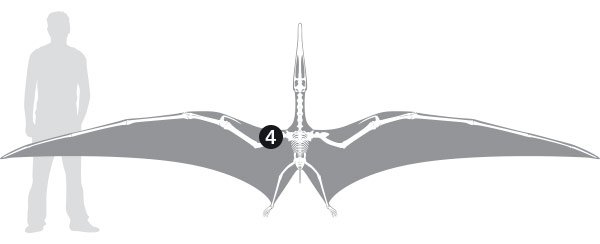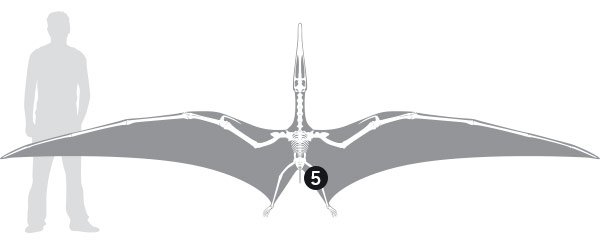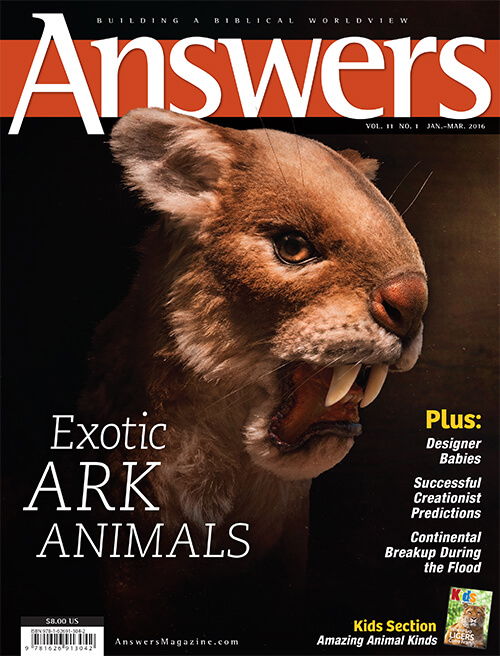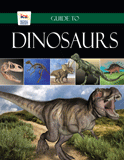Winged Wonders
Creation on Display
Winged reptiles were primitive, clumsy, “prehistoric” beasts, barely able to get off the ground, right? Take a closer look and see.
As big as a hang glider and bristling with teeth, it’s no wonder this fossil flying monster is called Anhanguera (ahn-yang-WHERE-ah), or “old devil.” Today, you may see Anhanguera in a museum’s “Prehistoric Flight” display, but there’s nothing primitive about it. From head to tail, the old devil was loaded with unique and sophisticated flying designs.
Wingin’ It
Anhanguera was geared to soar on narrow, sailplane-like wings that spanned 15 feet (4.5 m). As with other pterosaurs, more than half the wing’s length actually trailed from a single supersized finger, the fourth digit (corresponding to our ring finger). This gigantic wing finger had to be large enough and strong enough to bear the stresses on the main wing membrane, which stretched from the fingertip all the way to the ankle.
Much more than a simple flap of skin stretched over bones, the pterosaur wing packed all the complexity of the most advanced jet fighter wing—flaps, ailerons, spoilers, and more—into an incredibly thin sheet.
The wing membrane consisted of three layers. The outermost layer was made of long, thin, structural fibers called actinofibrils (ak-TIN-oh-FYE-brils), found only in pterosaurs. These fibers kept the membrane stretched tight during flight. Just below was an intricate web of muscle and connective tissue that allowed Anhanguera to control the curvature of its wing even more precisely than birds do. The deepest layer consisted of the blood vessels that fed the muscles. All this squeezed into a wing membrane just hundredths of an inch—a millimeter or two—thick!
Fuzzy-Dactyls
Pterosaurs didn’t have feathers or hair to protect them from the wind chill of flying, like birds and bats do. They had their own system instead. Covering most of the body were short, quarter-inch (5–7 mm) hair-like structures called pycnofibers (PICK-no-FYE-berz). They aren’t frequently fossilized, but when preserved they have been found on the head, body, and limbs (not on the wings so far). Though pycnofibers’ structure differs from mammal hair, they attached to the skin and likely performed some of the same functions.
This unique insulation gave the old devil a distinctly fuzzy appearance. While pycnofibers show no direct evidence of color, advanced ultraviolet photography of some pterosaur fossils shows they possessed beautiful color patterns on their crests. So forget the dull greens and grays in old dinosaur books; pterosaurs flew with flair!
Breathing Room
To make flight possible you need lots of oxygen flowing through your body. To help with this, Anhanguera had pneumatized (NEW-mah-tized) bones—hollow bones that contained air sacs. The air sacs inflated and deflated like balloons, drawing in air and continuously passing it through the lungs. The lungs themselves didn’t inflate because Anhanguera’s chest was stiff and could not expand like ours.
The pneumatized bones in the neck, arm, back, and pelvic regions are clues that Anhanguera had an advanced, lightweight, ultra-efficient, bird-like respiratory system to keep it flying for long periods out over the ocean.
Fly Fishing
While flying, Anhanguera was looking for food. With large, forward-facing eyes, it had great eyesight. The big eye sockets and long, toothy jaw make the skull look large from the side, but it was narrow and filled with open cavities to be aerodynamic and lightweight.
The old devil’s mouth was filled with teeth, ideal for scooping up fish, which, in the post-Fall world, made up nearly all of its diet. Anhanguera was initially created to eat plants, and its tooth structure was likely different at the beginning. But by the time of the Flood, the whole world was filled with violence, and this includes the specimens buried by the Flood (Genesis 6:11).
Anhanguera belongs to a large group of flying reptiles called pterosaurs, which had many other cutting-edge designs for flight, including unique bones, fused vertebrae, and large brains with specialized regions that processed flight inputs. Each pterosaur displays its own variation on central themes: body size, wing shape, crest, tail, and no doubt color, behavior, and more. God’s astounding variety and intricate designs continue to show us His great creativity and love of a bountiful creation.
Did You Know . . .
- A specialized knuckle on the wing finger allowed the wing to fold tightly out of the way when Anhanguera needed to walk.
- A pair of rounded bony crests distinguished Anhanguera from other pterosaurs. One was in front of the nostril, near the tip of the snout, and the other was below, on the lower jaw.
Class: Reptilia
Order: Pterosauria
Suborder: Pterodactyloidea
Family: Ornithocheiridae
Diet: Anhanguera ate fish,
probably by flying low to the
ocean surface and occasionally
plunging the end of its toothy
jaws into the water.
Habitat: Anhanguera likely nested
on coastal lands near the shore
and its ocean food source.
(Locations of known remains are
in Brazil and England)
Answers Magazine
January–March 2016
Discover the role of ancient Near Eastern writings in understanding Scripture and learn about some exotic animals that can only be explained by a Creator.
Browse IssueRecommended Resources

Answers in Genesis is an apologetics ministry, dedicated to helping Christians defend their faith and proclaim the good news of Jesus Christ.
- Customer Service 800.778.3390
- Available Monday–Friday | 9 AM–5 PM ET
- © 2025 Answers in Genesis



